Car Dashboard Symbols: What do they warn about?
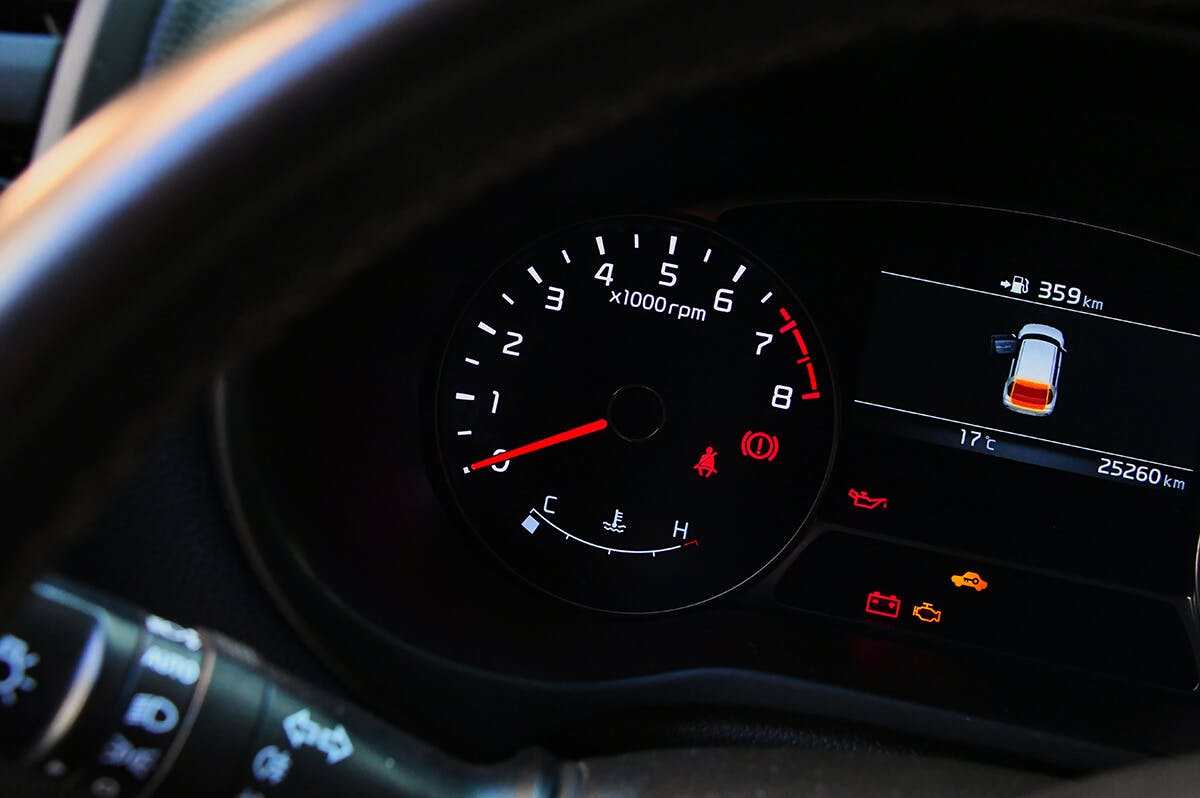
Car dashboard lights are nothing new, but as technology advanced, so did the variety of symbols on your car dashboard. Some of these symbols illuminate every time you start your vehicle, though no worries unless they stay on after you start the engine.
In a nutshell, the purpose of the car dashboard symbols is to either inform or warn the driver. For instance, the high-beam symbol illuminates when you turn on your high-beam lights. It has only an informative character. On the other hand, if the check engine symbol illuminates, you should start to worry.
Spis treści
Many car dashboard symbols exist, and even experienced drivers might need to recall their meaning. That's why we prepared an extensive overview of various car symbols that can appear on your dashboard. Please let us know if you spot a warning light on the dashboard that we did not include in this overview!
Red Symbols
Red symbols in a car, as the color suggests, indicate a severe problem that needs to be resolved immediately. Sometimes, it's a matter of minutes, so it is reasonable to park the car aside, call an expert, or solve the problem yourself on the spot.
AdBlue warning light

The light signals a low level of AdBlue additives. In most cases, the warning light also displays information about the stated range, and you cannot start the engine after the additive has been used up.
Airbag fault warning light
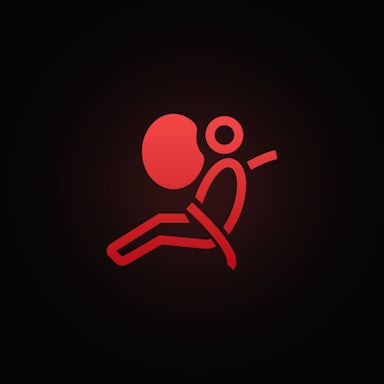
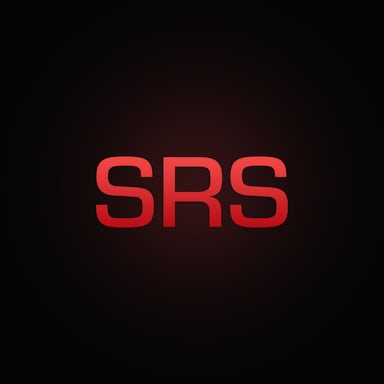
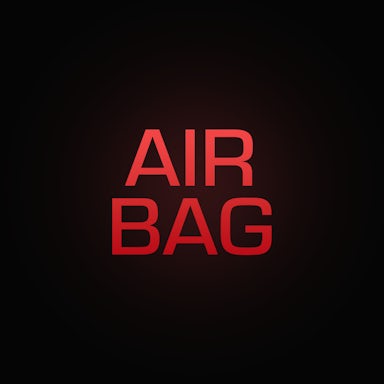
This light signals an error in the electronics of the airbag system. It may happen that the airbags do not fire or fire on their own during an impact. We recommend rather a quick visit to a car service center.
Battery warning lightCzytaj więcej
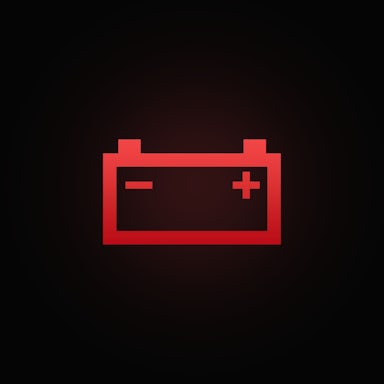
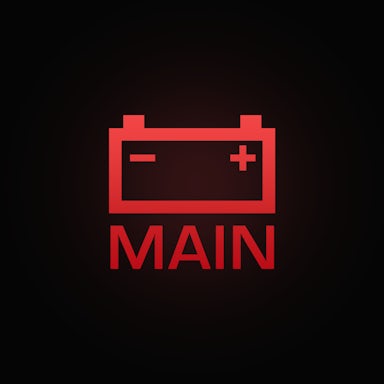
You may have noticed this red light upon starting your vehicle. If the light remains on, it might either be an alternator failure or a torn alternator drive belt. With such a malfunction, you can only go to the service center if your engine does not run after the battery is discharged. However, a much better alternative is to call a tow truck immediately.
Bonnet
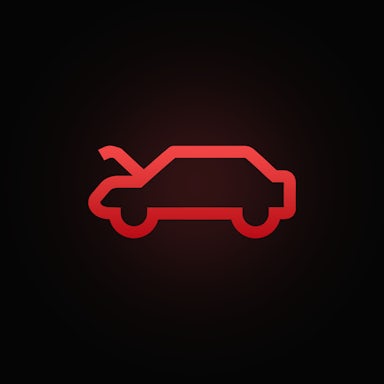
Illuminates when the bonnet is not correctly closed. Contact an authorized car service center if the warning light remains on after adequately closing the bonnet.
Boot lid
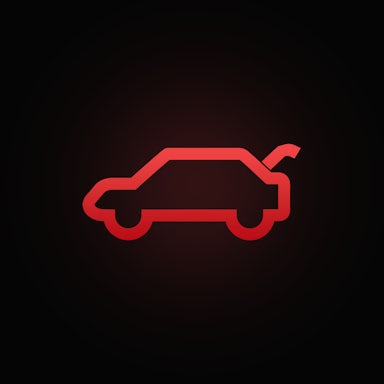
Illuminates when the boot lid is not correctly closed. Contact an authorized car service center if the warning light remains on after adequately closing the boot lid.
Brake warning light
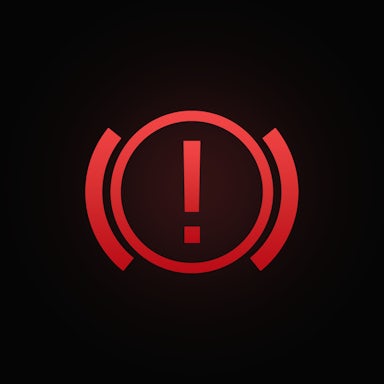
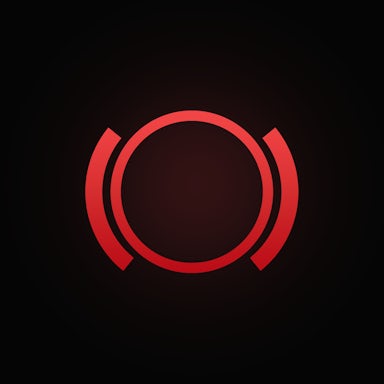
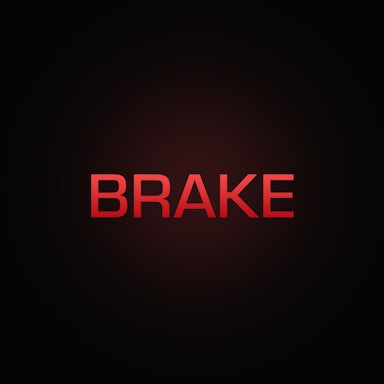
If the red brake light is on, you probably have the handbrake applied, in which case you should release it immediately. If the light continues to illuminate, stop and check the brake fluid level (top it up if it's below the correct level), as the brakes may stop working.
Cruise control warning light
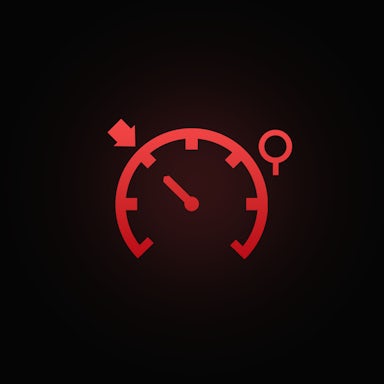
This indicator lights up in red if the maximum set speed is exceeded or there is a malfunction in the system.
Distance warning light
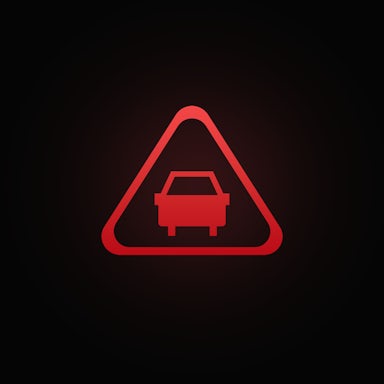
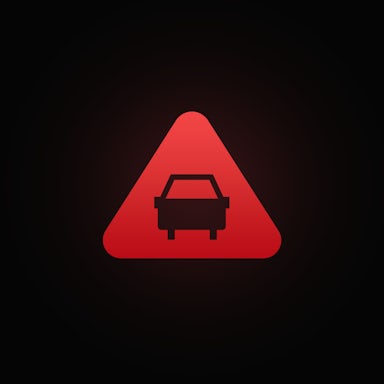
The light signals that the vehicle in front of you is too close! In such a case, you must immediately slow down and maintain a safer distance.
Doors open warning light
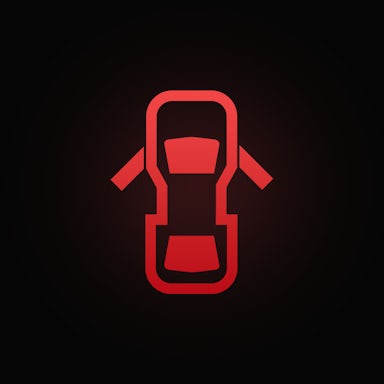
This light comes on if the door is ajar or insufficiently closed.
Engine coolant warning lightCzytaj więcej
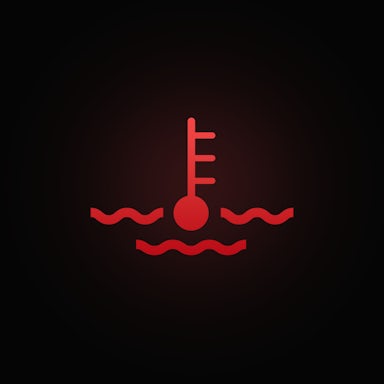
This red light comes on if the coolant level is below the minimum level or the engine is overheating. If this happens, you should stop and check the coolant level. If the coolant fluid needs to be topped up, you can do so only after the engine has cooled down to 60 degrees Celsius (140 degrees Fahrenheit). It usually means waiting a quarter of an hour or more, depending on the outside temperature.
Suppose you don't have coolant fluid or distilled water at hand. You can also use ordinary water in an emergency but must visit the service center later.
A damaged water pump, a cracked head, leaks in the cooling system, or a cracked radiator can cause coolant leakage. If the coolant is not leaking, a malfunctioning switch or fan can cause the engine to overheat.
Engine oil pressure warning lightCzytaj więcej
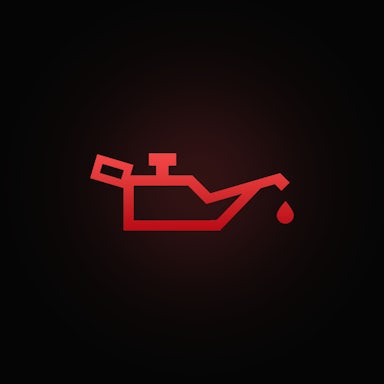
This red symbol warns of insufficient engine oil pressure, one of the reasons may be that the oil level is too low. You should stop the car immediately and turn off the engine, as the lubrication is not sufficient. If the warning light remains on even after topping up or the oil level is normal, turn off the engine and call a tow truck. Otherwise, you risk seizing the engine, as the oil pump may be damaged.
Gearbox malfunction
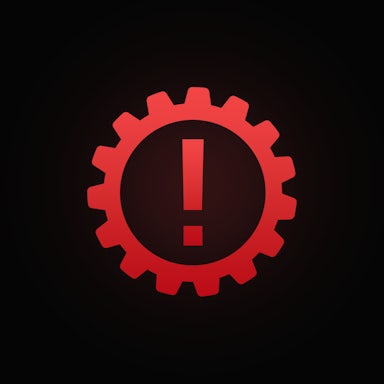
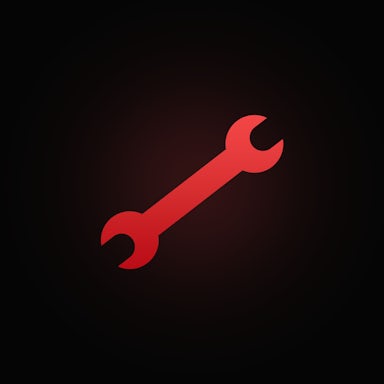
This warning light indicates a severe problem with the gearbox. Pull over immediately and call a tow truck. Continuing to drive can cause fatal damage to the gearbox, which is very expensive to repair.
Gearbox temperature
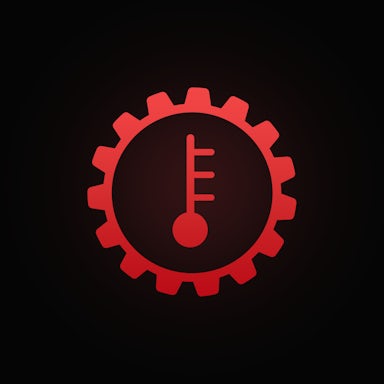
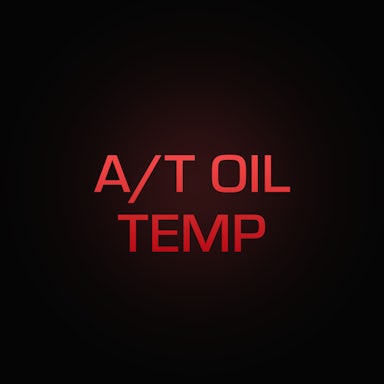
This symbol indicates that the gearbox is overheating due to the excessively high gearbox oil temperature. Park the car immediately and let it cool down. If you continue driving, you may cause fatal damage to the gearbox, the repair of which is costly. If the warning light appears again or does not go out even after cooling down, it is necessary to call a tow truck.
Hazard warning

This symbol alerts the driver that the hazard lights are activated. Don't forget to turn them off when you don't need to use them anymore, so as not to confuse other drivers.
Ignition switch malfunction
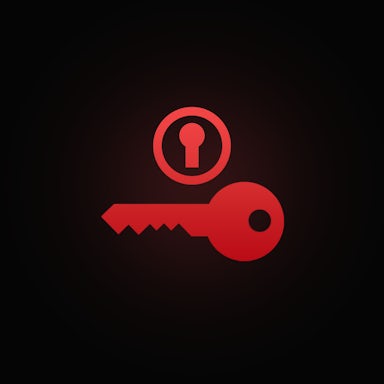
This symbol may indicate a problem with the ignition switch or the key. If it comes on, do not turn off the ignition because you might be unable to turn it back on. Immediate visit to an authorized car service center is recommended.
The ignition switch symbol also has an orange variant, indicating the same problem. Although this may not call for immediate action, it is wise to schedule a visit to an authorized car service center.
Key FOB warning light
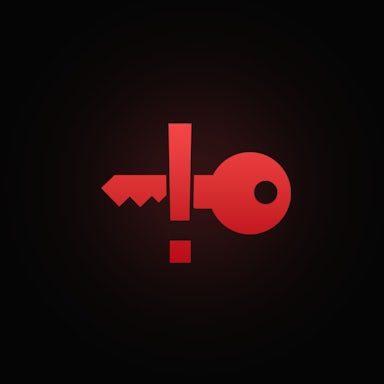

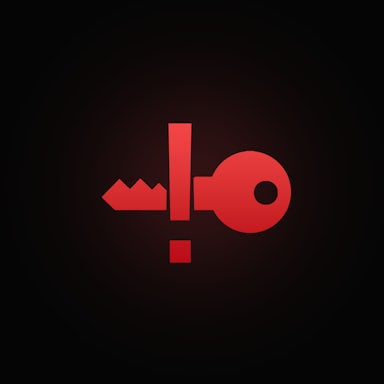
The key FOB symbol with an exclamation mark can have several meanings. It might indicate a weak battery in the key, a faulty antenna receiving the signal from the key, or a failure in the vehicle's security system. For cars with keyless start, it can alert the driver to place the FOB key near the ignition for safety reasons.
Parking brake
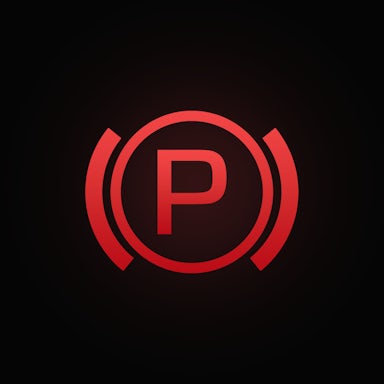
This warning light indicates that the parking brake is engaged. Stop the vehicle and release the parking brake before continuing to drive. After disabling the parking brake, the warning light should go out. If it continues to light up, leave the car parked and contact an authorized car service center.
Power steering wheel warning light
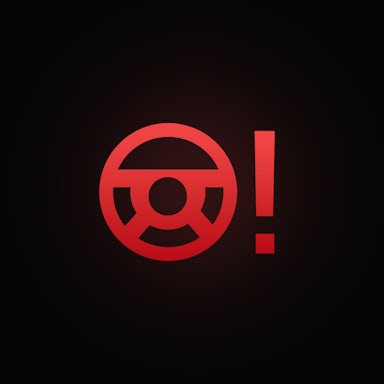
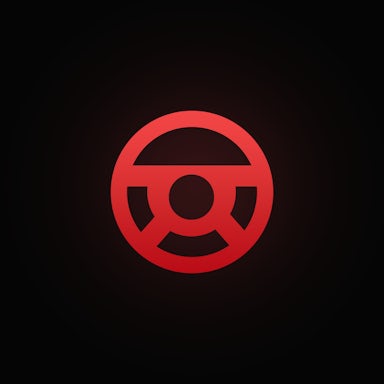
You will encounter this warning light if you have a problem with the power steering. The fault may be in the electrics or the servo pump. Driving such a vehicle is possible, but you have to put up with the reduced or zero effect of the power steering.
Red triangle warning light
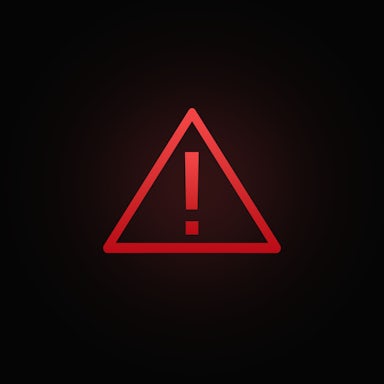
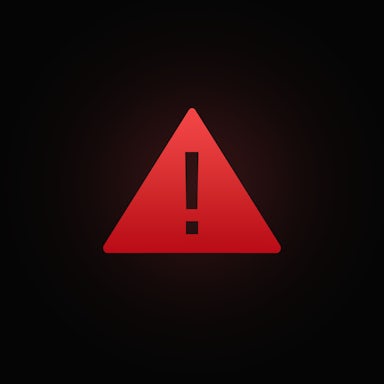
The red triangle symbol with an exclamation mark may be on or flashing and is often accompanied by an acoustic warning, while other warning lights may also illuminate. WARNING! Park the car immediately, and do not continue driving.
This is likely a severe problem, such as a lack of operating fluid. Depending on the situation, you may also need to turn off the engine, for example, with low oil pressure in the case of an internal combustion engine. If you can't solve the problem on the spot, it's better to call a tow truck.
Seat belt light
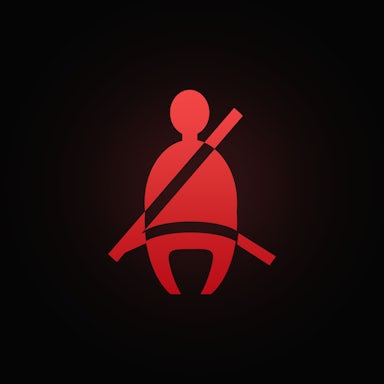
A seat belt light signals an unbelted passenger. In addition, a loud beep should alert you as well.
Start/Stop warning light
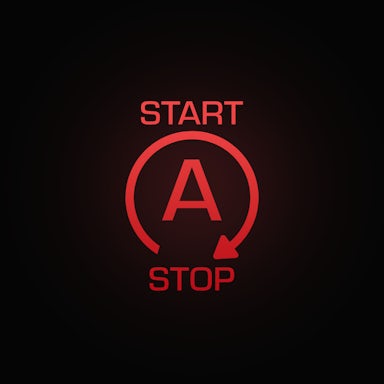
It lights up if the start-stop system has turned off the engine. After pressing the clutch, the engine starts. In the case of an automatic transmission, the brake pedal must be released.
Steering lock malfunction
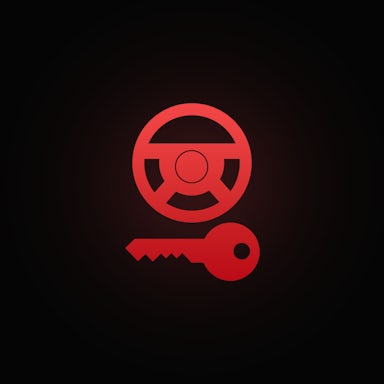
Stop the vehicle immediately and call a tow truck. Otherwise, there is a risk of a complete steering lock while driving. If it lights up in orange, you should plan a visit to a car service center.
Wrench warning light
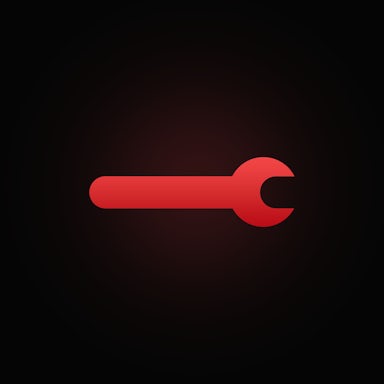
This indicator has various forms depending on the manufacturer. It lights up when the service check is needed. It could be a planned (set interval) check, an unexpected malfunction, or the need to go to the service center as soon as possible.
Yellow or Orange Symbols
The dashboard symbols illuminated in yellow/orange usually warn you about a problem the engine management system has detected. It might also be a low level of some fluids, DPF regeneration, etc. Most of the time, you can still drive a car with one of the yellow/orange symbols on, but you should visit the service center for diagnosis ASAP.
4 Wheel Drive Auto indicator
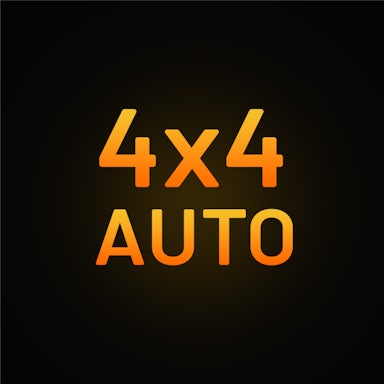
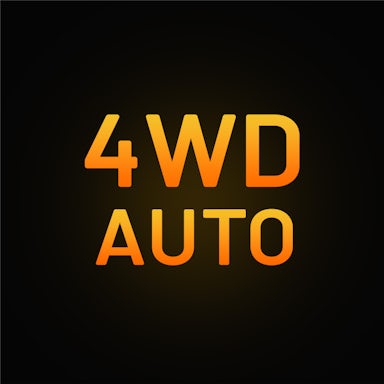
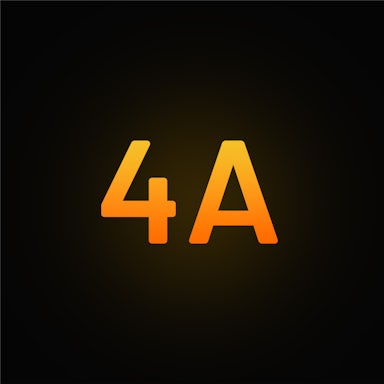
This light warns the driver that the vehicle is in "AUTO" mode with four-wheel drive. This means that the vehicle automatically engages four-wheel drive when it detects a loss of traction. Most modern four-wheel drive vehicles use this mode as the default. The problem occurs if the light is on even when the mode should be off.
4 Wheel Drive High indicator




This indicator warns the driver that the vehicle is in "HIGH" mode with four-wheel drive. In the case of older vehicles equipped with four-wheel drive, this was the default setting under normal driving conditions - in such a case, manufacturers rarely added the warning light to other indicators. Most modern four-wheel drive vehicles operate with the default "AUTO" mode and allow switching to 4x4 High or 4x4 Low.
The 4x4 High mode is useful when higher traction is needed at normal and higher speeds, for example, on a snowy road, during rain, etc. When the mode is active, the front and rear drive shafts are mechanically locked together, causing the front and rear wheels to rotate at the same speed.
This warning light can be displayed as 4x4 High, 4WD High, or in abbreviated versions such as 4HI or 4H. If it flashes permanently (not when switching the mode), it's a problem, and you should go to the service center asap.
4 Wheel Drive Low indicator
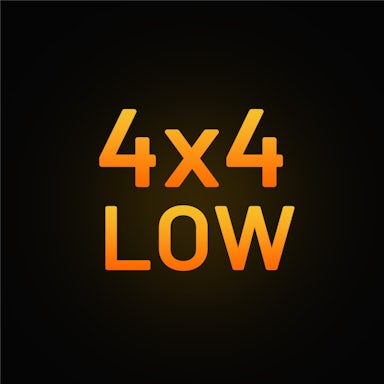
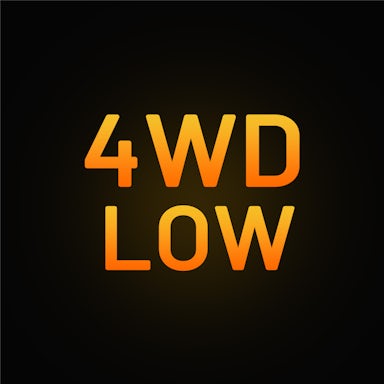
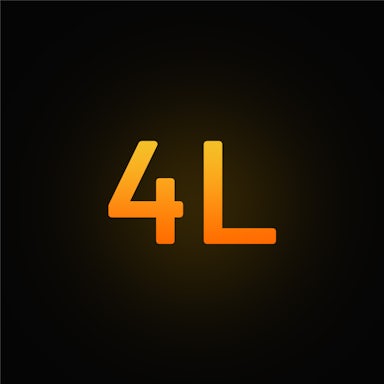
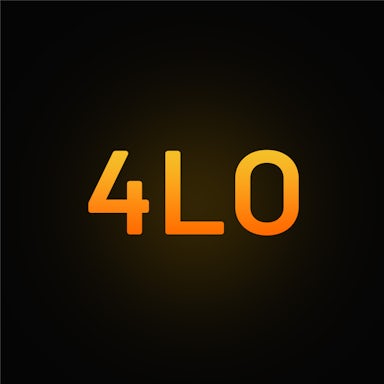
This light warns the driver that the vehicle is in "LOW" mode with four-wheel drive. When the mode is active, the front and rear drive shafts are mechanically locked together, causing the front and rear wheels to rotate at the same speed. A low gear ratio provides higher wheel torque and, thus, much higher traction.
However, the 4x4 Low mode is not intended for normal and higher speed but especially for very slow off-road and difficult terrains such as steep climbs, muddy terrain, or deep sand, where higher torque and higher traction come in handy. Before driving on such terrain with the 4x4 Low mode, turning off the traction control is important.
Depending on the manufacturer, the warning light can be displayed in different variants, i.e., as 4x4 Low, 4WD Low, or in abbreviated form as 4LO or 4L. If it flashes permanently (not when switching the mode), it's a problem, and you should go to the service center asap.
4x2, 2HI, 2H indicators



These indicators warn the driver that a four-wheel drive vehicle only supplies energy to two wheels. The 4x2 mode is suitable for dry surfaces or during good driving conditions, providing better fuel economy.
ABS warning lightCzytaj więcej
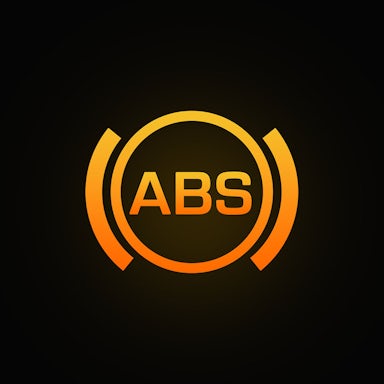
Illuminates if the ABS sensor or control unit is malfunctioning. A car's wheels without a functioning ABS might lock during braking. In this case, the vehicle brakes in the same way as the vehicle not equipped with this system (older vehicles). Be extremely careful when this indicator lights on, especially when it's rainy, or the surface is wet, and try to keep a safe distance while being soft on brakes.
Adaptive cruise control warning light
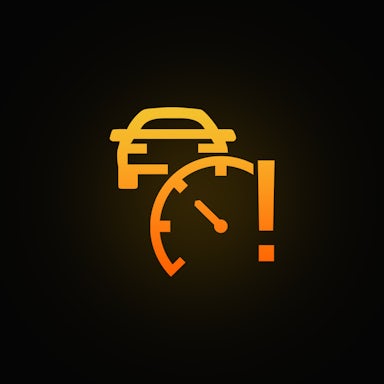
The adaptive cruise control is currently not functional. At the next opportunity, stop the vehicle, and restart the engine. If the warning light stays on, the radar detecting the surroundings may be covered in dirt/ice, or there is a malfunction within the ACC system. You can continue driving, but the adaptive cruise control will not work.
Adaptive headlights system (AFL)
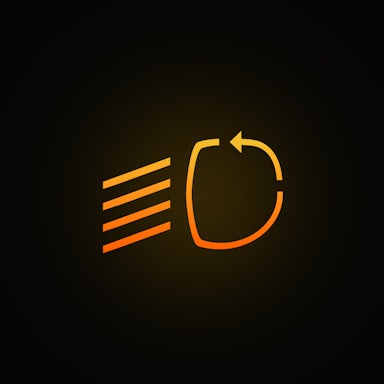
This symbol signals a failure of the adaptive lighting system. As with the rain sensor, the lighting should still work in standard mode.
Adaptive suspension dampers
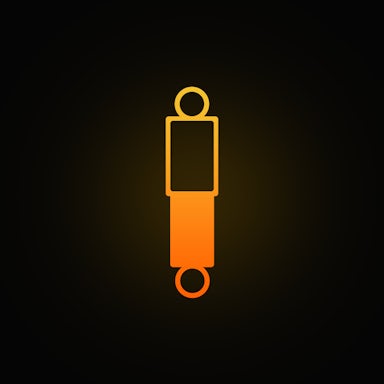
It signals a malfunction in the suspension stiffness regulation. In this case, it is recommended to drive carefully, as this malfunction affects stability. In addition, you need to go to the service center for a system functionality test.
Air suspension warning light
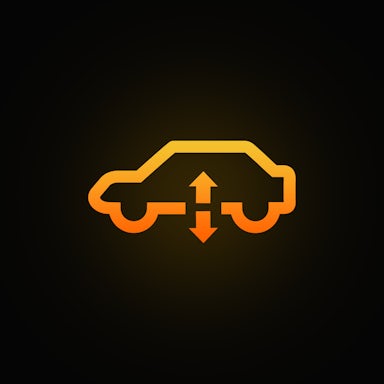
This warning light signals a malfunction of the air suspension system. As with suspension shock absorbers, driving carefully and going to a car service center is recommended.
Brake pad warning lightCzytaj więcej
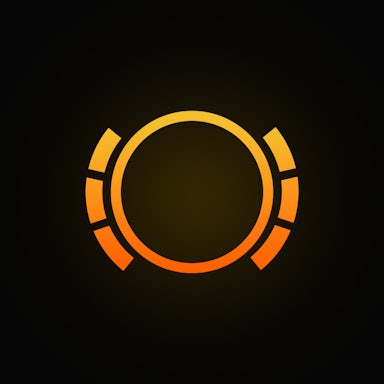
This warning light comes on when the brake pads are excessively worn. We recommend replacing them as soon as possible, because the effect of the brakes may be reduced.
Bulb failure warning light
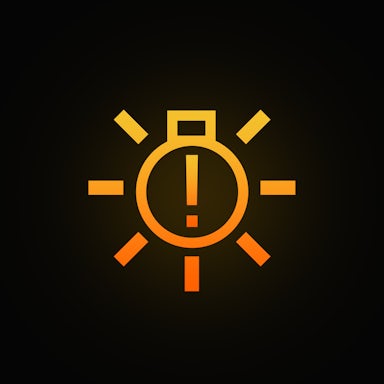
It informs about a non-functioning light bulb that needs to be replaced.
Convertible roof warning light
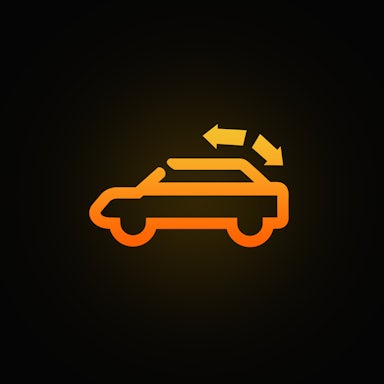
The warning light is on while the roof is being opened or closed. It should disappear as soon as the roof is fully opened/closed. In case it stays on, there may be a malfunction.
DPF warning light
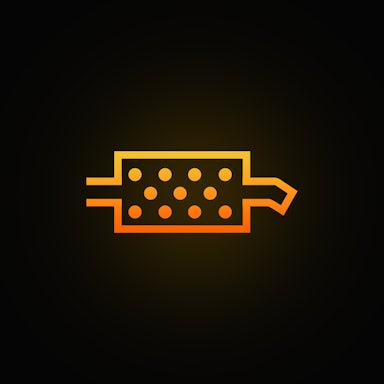
The DPF (diesel particulate filter) warning light indicates either a problem or regeneration of the particulate filter. You should drive and keep a steady speed in an rpm range of 2000 - 2600rpm for at least 15 minutes or until the regeneration of the filter is complete. When it's done, the symbol disappears. Otherwise, you need to go to the service center asap.
You may encounter the regeneration of the filter when you frequently use your diesel car for short distances.
Engine warning lightCzytaj więcej
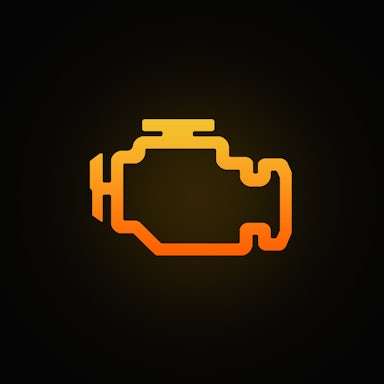
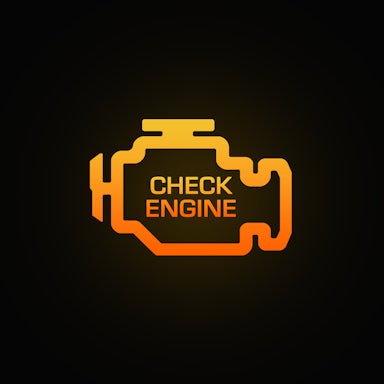
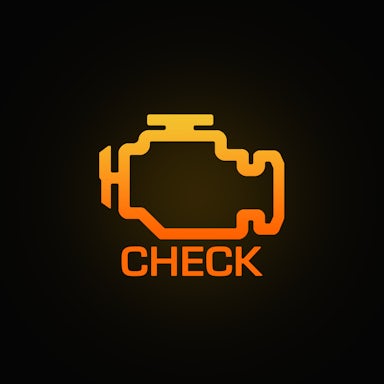
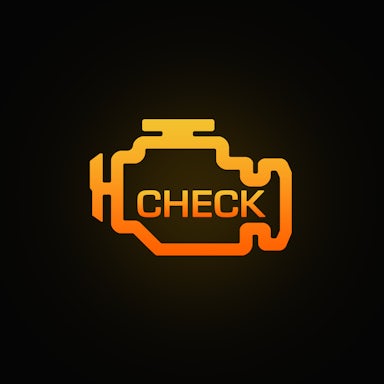
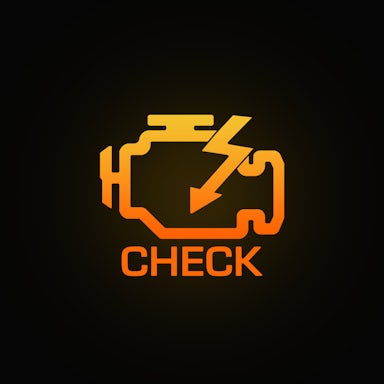
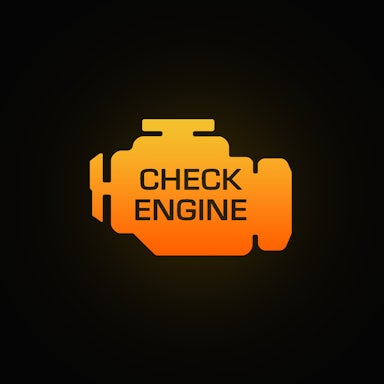
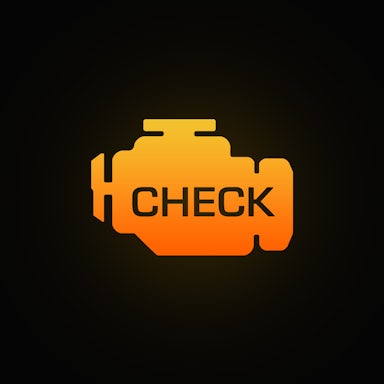
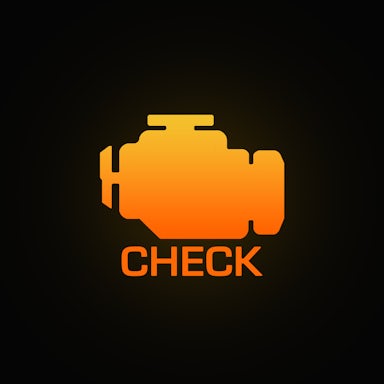
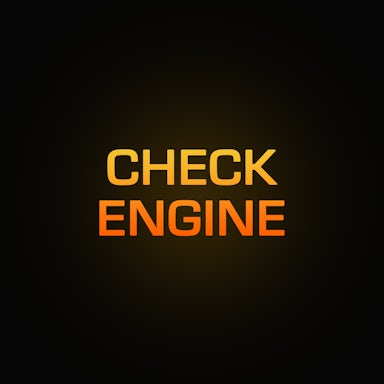
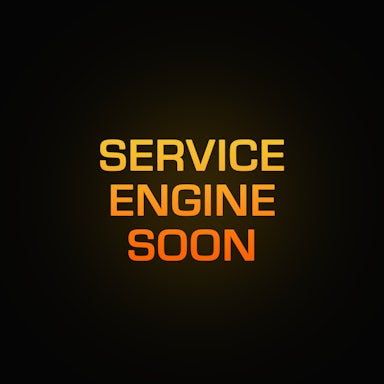
This infamous warning light signals a general problem. It can be a malfunction of fuel injection, ignition, camshaft or crankshaft, and many others. Sometimes the engine warning light can come on with the other symbol, but it can also appear in case of a random error. However, without running a car diagnostic, it is impossible to tell whether it is a severe problem or just a minor issue.
In some cases, the engine may even go into emergency mode, and its performance may be limited. If this happens, we recommend an urgent visit to a car service center.
EPC warning lightCzytaj więcej

An illuminated EPC warning light can signal a malfunction of the throttle system, traction control, cruise control, accelerator pedal, or impurities in the fuel. A less severe problem that can cause the EPC light to come on is a blown bulb, blown fuse, or faulty brake light sensor. In some cases, a low battery may also cause this issue.
ESC warning lightCzytaj więcej
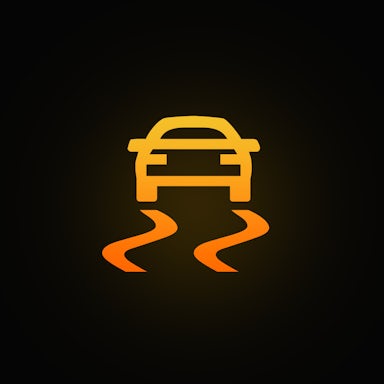
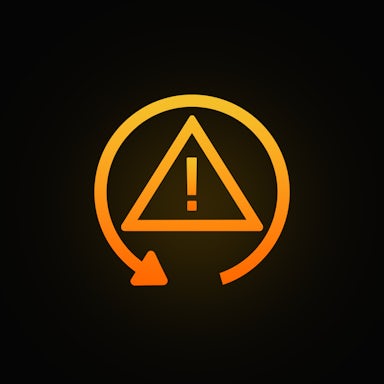
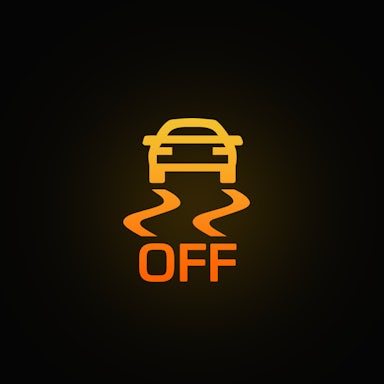
If this warning light flashes while driving, the electronic stability control (ESC) is active and intervenes during a critical situation, for example, when taking sharp turns to prevent skidding. If it is constantly lit, the system is probably not functional (unless there is an error in the electronics that would accidentally light up the light), or it is turned off.
A warning light with the inscription OFF always indicates that the system is turned off. Driving with the ESC warning light on can mean that the vehicle's handling is poorer, which can lead to dangerous situations on the road. Some models have the identical shape of the ESP and ESC lights. The point is that these systems are identical. The difference is only in the name.
ESP warning lightCzytaj więcej
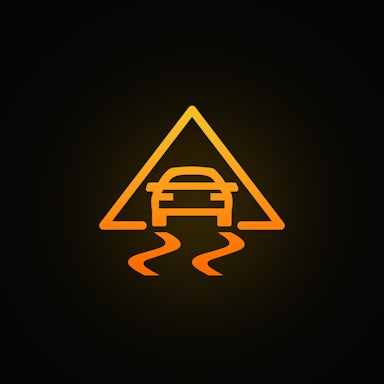

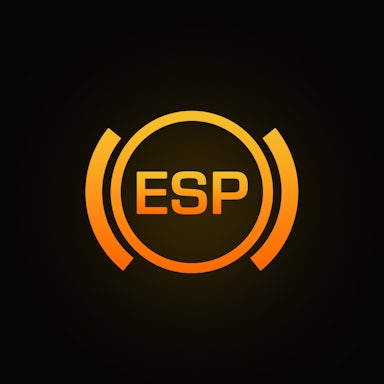
If the ESP warning light flashes while driving, the ESP system is functional and intervenes in the steering. You might encounter it when driving your car on slippery or problematic surfaces. If your ESP light is constantly on, it either means that you turned it off or there is a malfunction in the system. In these cases, the stability of your car would decrease.
Fuel tank cap warning light
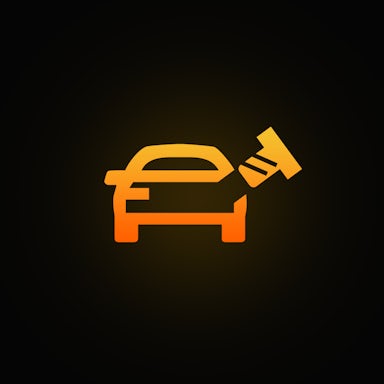
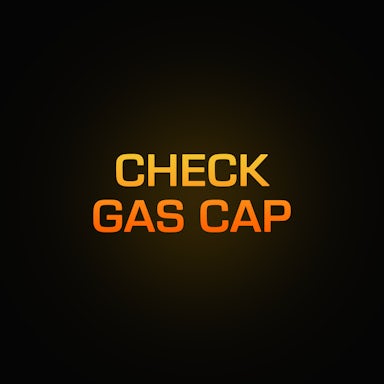
This symbol warns the driver that the fuel tank cap is not properly closed or tightened. It may as well light up if the fuel tank cap is damaged or missing. Stop the vehicle as soon as possible and check the cap. If it is OK, the warning light may mean that air is entering the fuel compartment. If that's the case, you should visit a car service center immediately.
Glow plug indicator

The indicator lights up after turning the key to the second position, i.e., right before the engine's startup. It signals the preheating, thus the activity of the glow plugs. After it goes out, you should start the engine. If the glow plug indicator also lights up while driving, the most common fault may be in the glow plugs or the glow plug circuit. Replacing your glow plugs would most likely resolve this issue.
Headlight range control
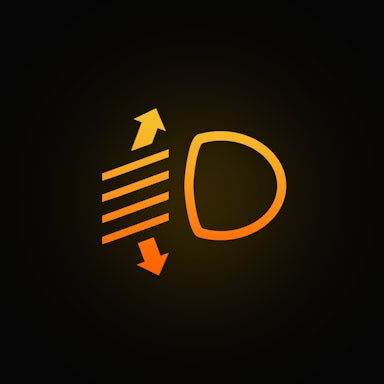
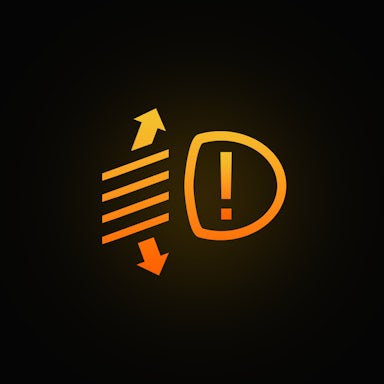
It signals a malfunction of the automatic adjustments of the headlights. The functionality will not be impaired in manual mode but will not operate automatically.
Hill Descent Control (HDC/DAC)
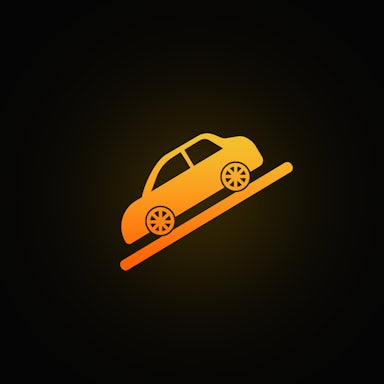
It signals that the hill descent control is activated in case of a steeper slope. In this situation, the system takes control of the vehicle's stabilization and maintains a constant speed.
Ignition warning light
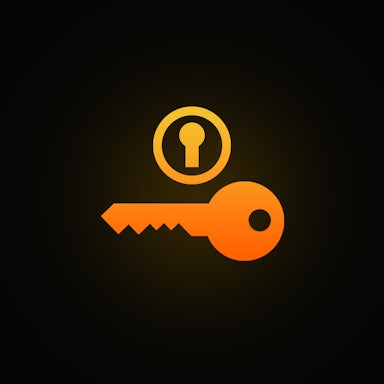
This warning light indicates a fault with the ignition switch or the key. It is best to visit a car service center rather soon.
If it lights in red, do not turn off the ignition because you might be unable to turn it back on. In such a case, you need to drive straight to the car service center immediately.
Key not in vehicle
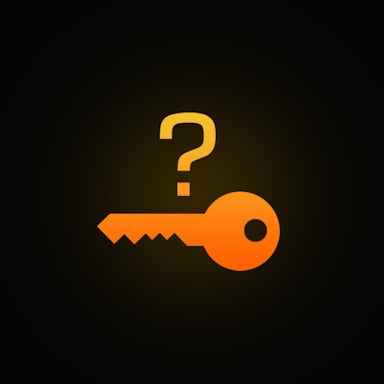
This warning light appears in vehicles with a keyless entry system and will illuminate if you have taken the key out of the car while the engine is running. If you turn off the engine, you won't be able to start it again unless the key is in the vehicle.
Lane assist warning lightCzytaj więcej
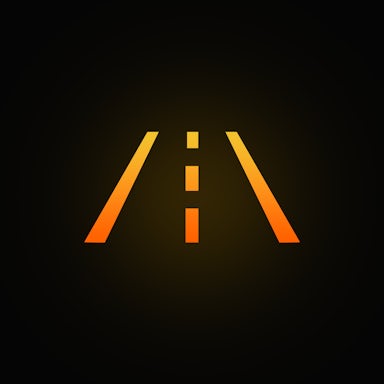
It indicates that the Lane Assist system is turned on, but the road markings cannot be detected. You might have seen this indicator in green, in which case the road markings are adequately detected. The system might malfunction if it lights up in orange, accommodated with a message.
Low fuel indicator
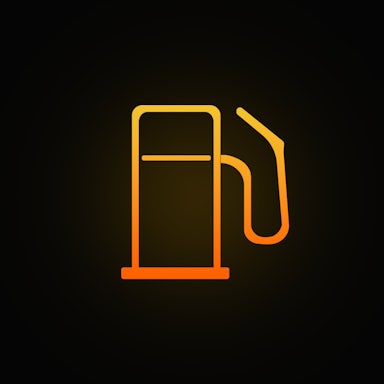
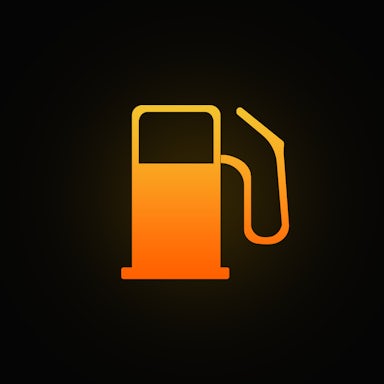
When this light is on, the range is approximately 50 to 100km (or 30 to 60 miles), depending on the fuel tank size. You should find a gas station as soon as possible. Before picking the wrong side at the gas station, look closely at the fuel gauge symbol - there might be an arrow that indicates where's the gas cap on your car.
Power steering system warning light
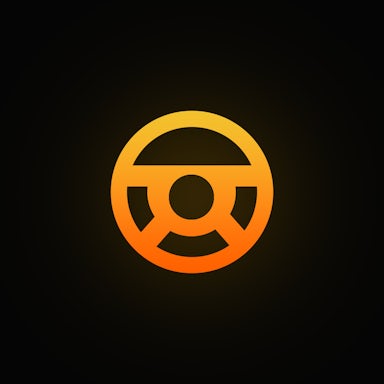
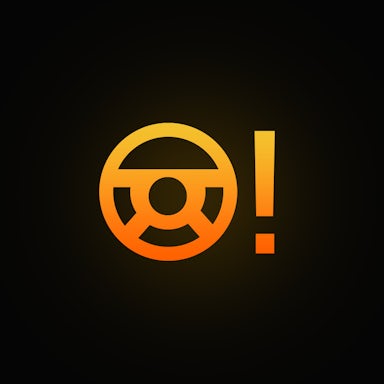
This orange symbol indicates a fault in the power steering. The fault may be in the electrics or the servo pump. Driving such a vehicle is possible, but complicated, as you have to put up with reduced or zero effect of the power steering. If you are not able to safely transport the vehicle to the car service center, you should call a tow truck.
On some vehicles, this symbol lights up after disconnecting the battery or jump-starting the car. If this happens, turn the steering wheel fully to the left and then fully to the right and drive the car for a short distance at a speed of 15-20 km/h (or 10-15 mph). The warning light should go out.
Press clutch pedal warning light
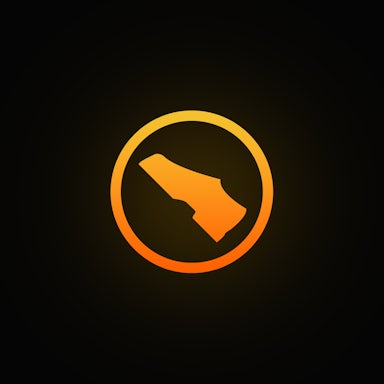
This warning light informs that it is necessary to press and hold the clutch pedal when starting the engine. Please note that this warning light almost resembles the one for pressing the brake pedal.
Rain and light sensor
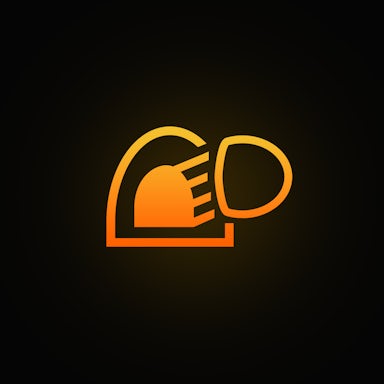
Illuminates in case of malfunction of automatic wiping and lighting of lights. The functionality of the wipers and lights is not impaired, but they won't switch automatically.
Rear fog lights indicator
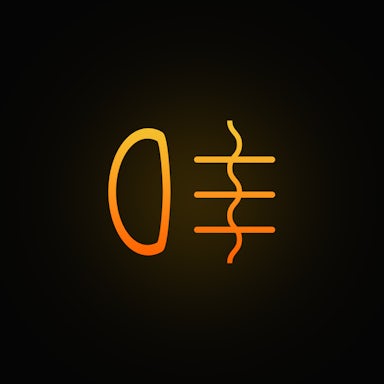
It illuminates if the rear fog lights are on.
Rear spoiler warning light
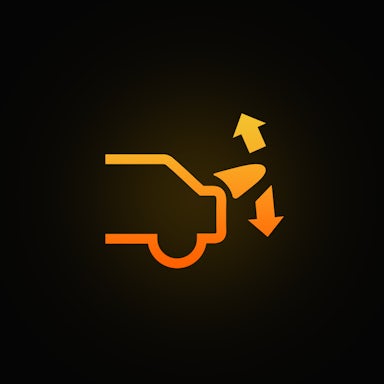
The warning light may illuminate in the event of a malfunction in the rear spoiler control system. It is not recommended to drive on the highway with such a malfunctioning spoiler control, and you need to visit a service center as soon as possible.
Service reminder warning light
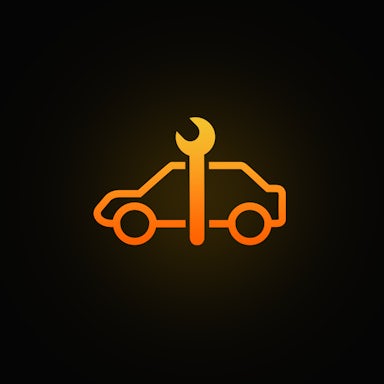
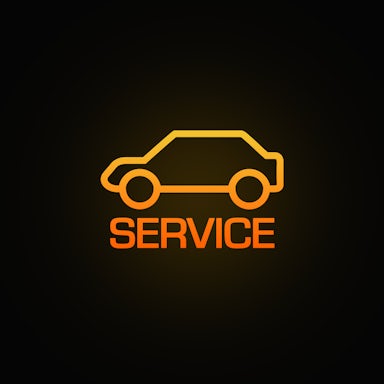
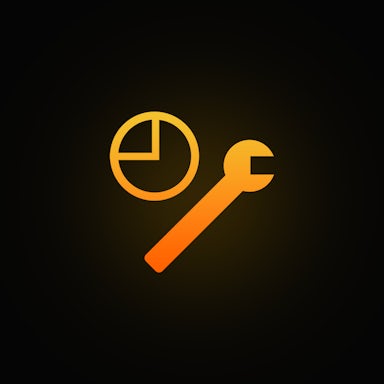
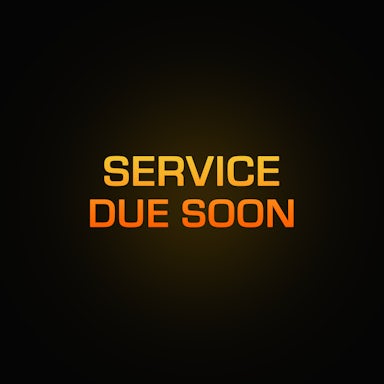
This symbol indicates a need to visit a car service center. The reason may be regular maintenance, such as changing oil and filters, but it may also be a severe malfunction that requires an immediate check. The specific malfunction it may warn about may differ depending on the vehicle. In any case, we recommend visiting the car service center immediately.
Steering lock warning light
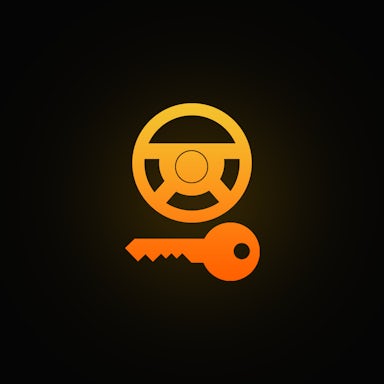
This warning light indicates a malfunction in an electronic steering lock. You can continue driving but should visit the service center asap. If it lights up in red color, stop the vehicle immediately and call the tow truck to prevent a complete steering lock while driving.
Tire pressure warning light
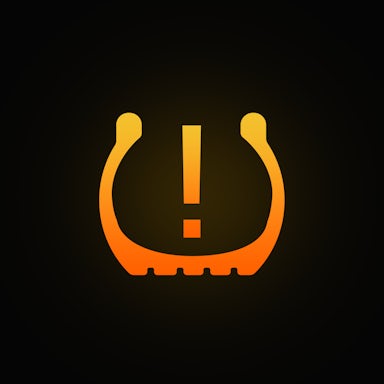
This light signals incorrect tire pressure in one or more tires. You should check and adjust the pressure in your tires. If you have changed the tires and their dimensions differ from the previous ones, the warning light may also appear. In that case, just set a new value, and the light will go out. The required value depends on the type of car, tires, and other factors - check the manual.
Towing hitch warning light
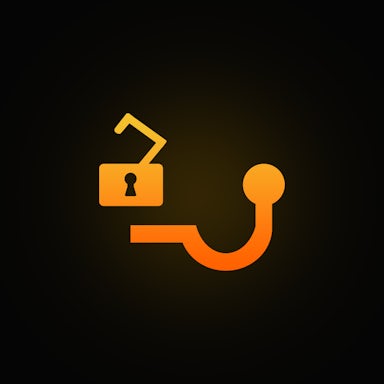
If this symbol appears on your dashboard, the towing hitch has not engaged properly. It is necessary to stop, disconnect and reconnect the towing device as soon as possible.
Water in the fuel warning light
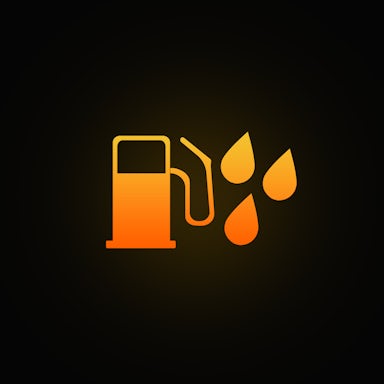
This symbol warns of a large percentage of water in the diesel. Reduce your speed and carefully head straight to the authorized repairer. If this warning light comes on right after refueling, turn off the engine and call a tow truck. In this case, the diesel is contaminated with water, and the tank must be emptied. Burning such fuel may cause fatal engine damage.
Windscreen washer fluid level
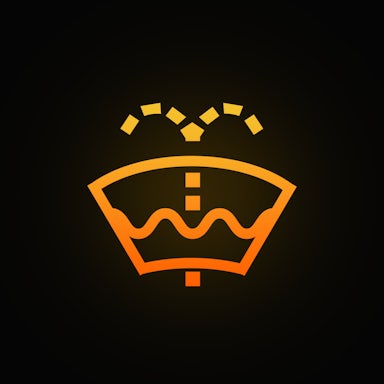
This indicator lights up if there is insufficient fluid for the windscreen washer. If this happens, just refill the washer tank - the cap is usually blue, so you can find it quite easily.
Green and Blue Symbols
Green and blue dashboard symbols usually inform the driver about the operation of individual systems. The blue color was previously reserved for high beams, but today, some cars use it, for example, as a replacement for the coolant temperature indicator.
Blue engine coolant lightCzytaj więcej
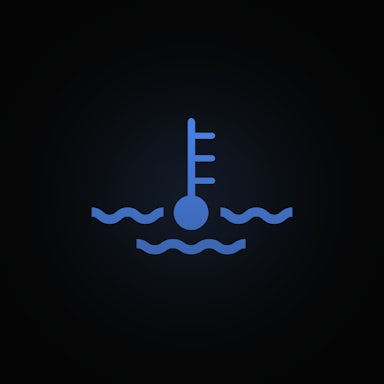
The blue engine coolant light informs the driver about the low coolant temperature. In this case, the engine should not be revved to high speeds while this light is on because it is not warmed to its optimal operating temperature.
High beam lights


The blue symbol indicates that the high-beam headlights are on.
Adaptive cruise control
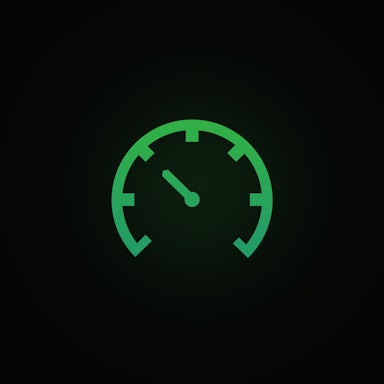
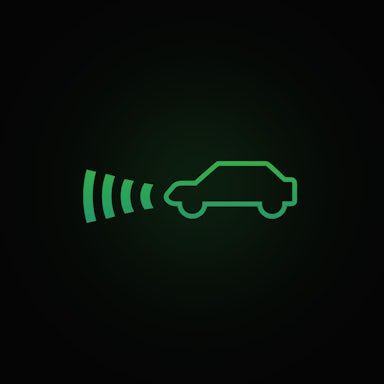
Lights up if the adaptive cruise control is activated. Adaptive cruise control controls the speed and the distance. This green symbol starts to flash if the maximum set speed is exceeded. If it does not stop flashing even after you reduce the speed, the system may malfunction, and you should let it check at the car service center.
Automatic high beams indicator
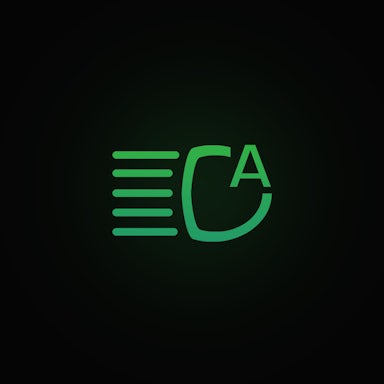
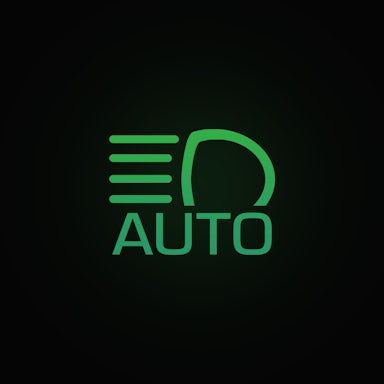
This green symbol indicates that the automatic high beam dimming function is activated. Depending on the vehicle, this indicator may have a blue (less common) or white color.
Cruise control indicator
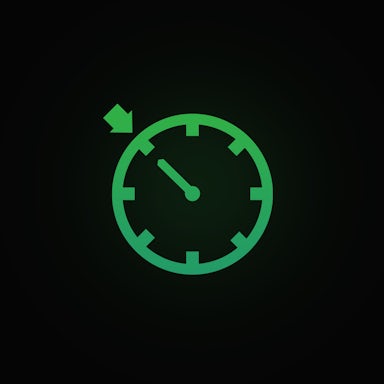
It lights on when the cruise control system is activated. The cruise control system automatically controls the speed of the vehicle.
ECO mode driving indicator



It indicates the activated ECO (saving) mode, which ensures that the vehicle achieves the lowest possible consumption. However, this mode will eventually take its toll on the vehicle in the form of weaker performance, acceleration, slower reactions to the accelerator, or increased recuperation.
Electronic parking brake
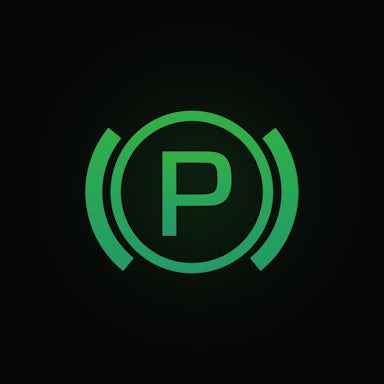
This indicator informs that the Auto Hold is activated. This is a feature of an electronic parking brake and ensures the smoothest possible start uphill. You can turn off Auto Hold manually, while the button is usually located close to the electronic parking brake button.
Front fog lights

It signals that the front fog lights are on.
Lane assist indicator
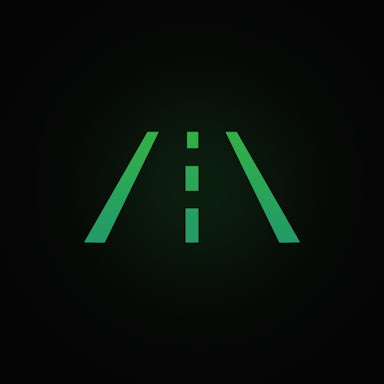
This indicator lights on when you turn on the lane assist system. The Lane assist system, as the name suggests, helps the driver keep the vehicle in the lane. It warns you whenever your car begins to move out of the lane.
Low beam indicator
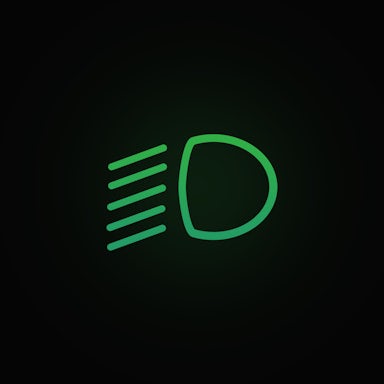
The green indicator light means the car's dipped beam is turned on.
Press brake pedal indicator
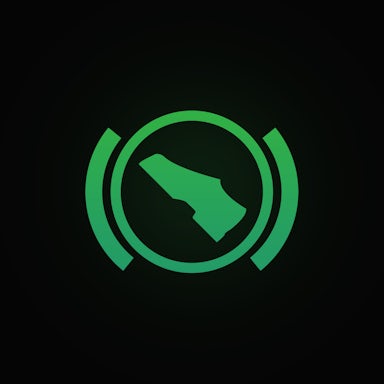
It lights when the brake pedal needs to be pressed and held while you move the gear lever out of the park position. This symbol only appears in vehicles fitted with an automatic transmission.
Side light indicator
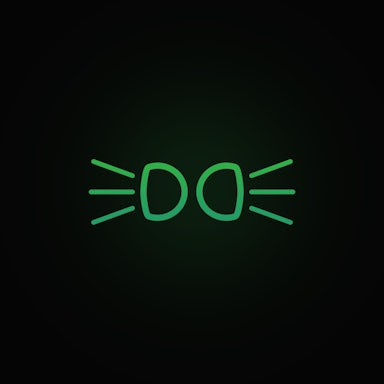
This green light turns on when the side headlights are in use.
White Symbols
The white symbols mainly have an informative function. In older cars, there were no warning lights of this color. With the advent of more and more different parts, their number constantly increases.
Automatic high beams on
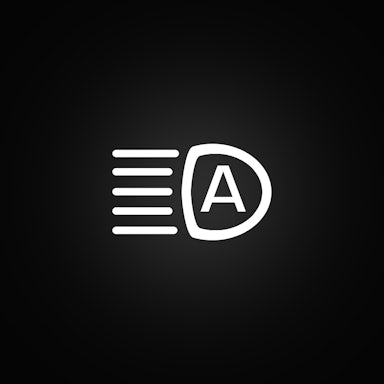
This indicator informs that the automatic high beam dimming function is active. A similar-looking indicator with the same meaning can light up in green, or less often in blue, depending on the vehicle.
Outside temperature warning lightCzytaj więcej
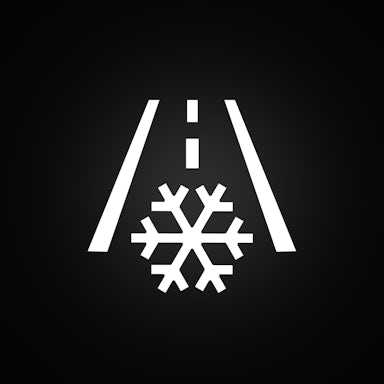

This dashboard symbol informs about a drop in outside temperature below a certain value (4°C or 39°F if not customized).